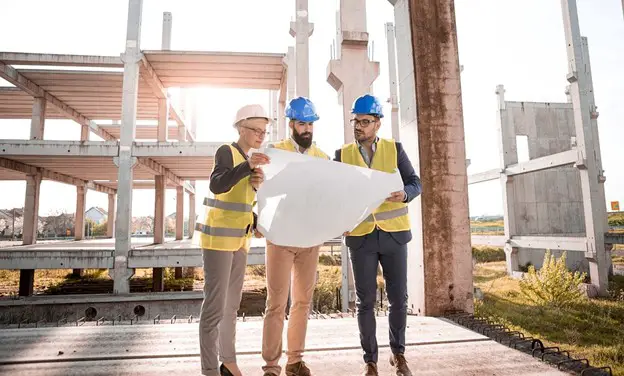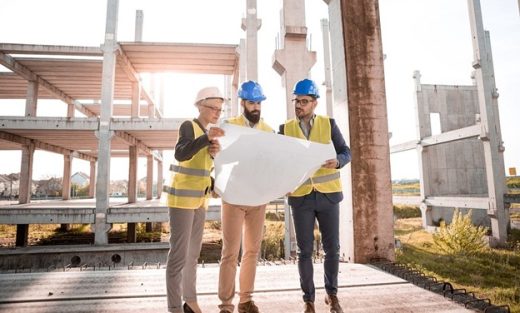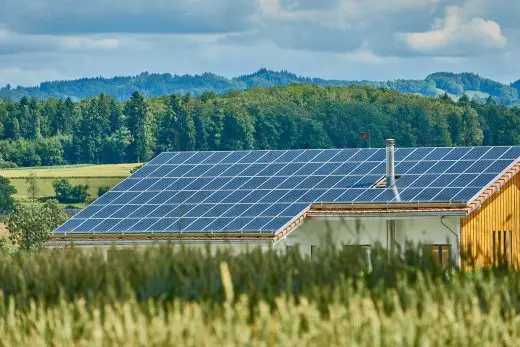Designing and building an energy-efficient home guide, Green building design advice, Eco house tips
Tips for Designing and Building an Energy-Efficient Home
12 March 2023
In today’s world, conserving energy is becoming increasingly important to reduce mankind’s environmental impact. There are ways to make your home greener and more efficient. From designing with green materials and selecting the most suitable appliances to implement affordable insulation methods, there are plenty of easy tips that you can use when building or renovating your home.
1. Invest in Quality Insulation
Investing in high-quality insulation is the most effective way to reduce your energy bills. This can help keep heat in during the winter months and out during summer, resulting in more comfortable temperatures throughout the year. Consider using recycled materials such as cellulose or fiberglass for optimal energy efficiency.
Barndominiums, metal or wood framed buildings combining living space and workshop, can also be insulated with spray foam to provide superior energy efficiency. You can find metal barndominiums kits with insulation and energy-efficient windows included. Adding these materials will help reduce your energy bills and better protect the environment.
You should also consider the type of windows you choose for your home. Low-E (low-emissivity) or insulated glass windows are designed to reflect infrared light away from your home while allowing natural light in. This helps keep warm air in during winter and out during summer, resulting in lower energy bills.
2. Choose Efficient Energy Appliances
When it comes to appliances, look for models with the Energy Star label. This means the appliance has been tested and certified by the Environmental Protection Agency (EPA) as more energy efficient than standard models.
You can switch your current appliances to more efficient ones, such as LED lightbulbs, tankless water heaters, or a heat pump for your air conditioning. These appliances will help reduce your energy bills and still offer the same level of convenience.
The same goes for your HVAC system. An energy-efficient system will use less power to heat or cool your home, lowering energy bills. You can also install a programmable thermostat which helps reduce energy consumption by allowing you to set temperature preferences throughout the day.
3. Consider Green Materials
When building or remodeling your home, look for materials that are made from sustainable sources. Some of the most popular green building materials include bamboo (a significantly renewable resource), cork, and linoleum flooring.
You should also consider using recycled material for insulation or other home components. This will help reduce your carbon footprint while still providing superior energy efficiency. Solar panels are also becoming increasingly popular. Not only do they provide clean energy, but they can also help you save money on your electric bills. The initial installation cost may be expensive, but the long-term savings are worth it.
4. Focus On Heating Design
Heating design is an integral part of energy efficiency. Consider investing in a high-efficiency furnace, and ensure the ductwork is adequately sealed to prevent air leakage. By making your home as airtight as possible, you can reduce the required heating or cooling, resulting in lower energy bills over time. You should also consider using zone heating, which means using different thermostats for different home areas. This will help you save energy and money by only heating or cooling rooms as needed.
Install weather stripping around windows, doors, and other openings to keep conditioned air from escaping. You can also invest in a heat recovery ventilator (HRV) to help reduce air leakage while allowing fresh air into the home.
5. Invest in Quality Doors and Windows
High-quality doors and windows are essential for energy efficiency. Look for models that are designed to keep the heat in during winter and out during summer. Insulated or low-E windows offer superior performance while allowing natural light into your home.
You should also invest in quality exterior doors, as they can help prevent air leakage from entering or exiting your home. Look for models with tight seals and weather stripping to ensure maximum efficiency. Additionally, consider adding storm windows or exterior shutters to reduce air leakage. This will help keep your home warmer in winter and cooler in summer – resulting in lower energy bills over time.
6. Utilize Natural Light
One of the simplest ways to save money on your energy bills is by taking advantage of natural light. Strategically placing windows, skylights, and other openings can help reduce your need for artificial lighting, resulting in lower electric bills over time.
You should also consider using reflective materials on walls and ceilings to increase the natural light in your home. This will help you save energy while providing a comfortable and inviting space. Consider adding a solar tube or two if your home doesn’t get enough natural light. These small sunlight-collecting tubes can help bring daylight into interior spaces, reducing your need for electric lights and saving you money in the process.
Energy efficiency is an integral part of creating a sustainable home. By improving your home’s efficiency, you can reduce your energy consumption and save money while maintaining a comfortable living space. With the right materials, design, and strategies, you can create an energy-efficient and eco-friendly home.
Comments on this guide to Designing and building an energy-efficient home article are welcome.
Sustainable Building Design
Sustainability Posts
Teaching your family how to save energy
How to Design an Energy Efficient Building
Simple changes to make your home more eco-friendly
How to Make a Home more Eco-friendly
Can you have a net-zero house?
Buildings
Residential Architecture Articles
Comments / photos for the Designing and building an energy-efficient home advice page welcome







